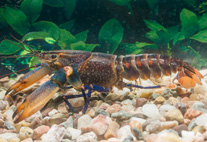Abstract
Little is known about the diversity and systematics of nematodes in hadal trenches (>6000 m depth). The analysis of core samples recently obtained from Tonga (10810 m) and Kermadec Trenches (8081 m) reveals the presence of a diverse nematode community in these extreme environments, and provides the deepest record for the phylum. Here, one new genus and five new species of the family Xyalidae are described. Lamyronema n. gen. is characterised by a large, tripartite buccal cavity and can be distinguished from other genera with similar buccal cavities mainly by the pharyngeal tissue almost completely surrounding the buccal cavity and by the presence of sub-cephalic setae positioned anteriorly to the amphideal fovea. Lamyronema horizonensis n. gen. n. sp. is characterised by the presence of 16–22 sub-cephalic setae, pronounced sexual dimorphism in the size of the amphideal fovea, and short, straight spicules. Daptonema amphorum n. sp. is characterised by short somatic setae, narrow head region, amphideal fovea relatively far from anterior body extremity, thin gubernaculum without apophyses, and cuticularised prevulvar uterine sac with two conspicuous rims. Manganonema kitasatoi n. sp., M. rowdeni n. sp., and M. majusculum n. sp. share traits that set them apart from other species of the genus, i.e., large body size (1100–2080 µm), presence of one pair of short setae posterior to the amphideal fovea, and male reproductive system with two testes. The latter trait necessitates amendments to the genus diagnosis.

